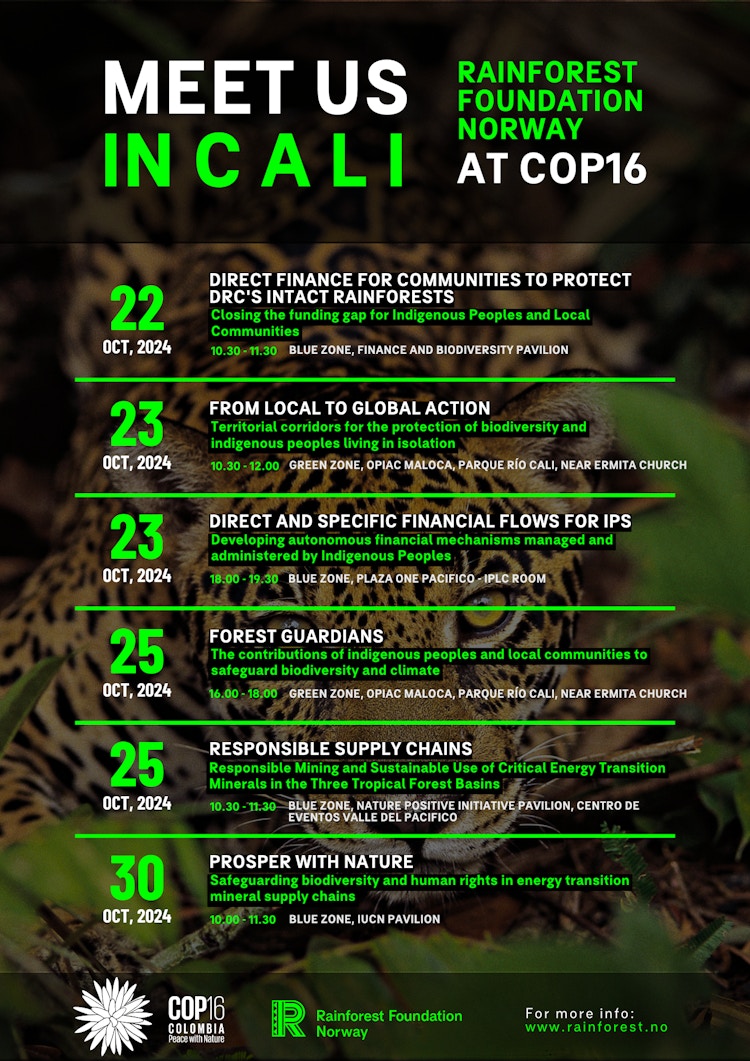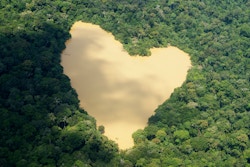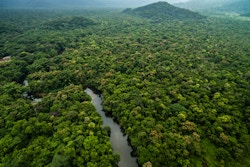Rainforest Foundation Norway at COP16 in Cali, Colombia
Protecting nature and biodiversity in partnership with Indigenous Peoples and Local Communities
Tropical rainforests contain over half of the world's land-based plant and animal species, but they are disappearing fast. Indigenous Peoples and Local Communities are the guardians of the rainforest and must be empowered to help the world protect nature and biodiversity.

PATROL: Two Yanomami men in the Brazilian Amazon. Indigenous Peoples and Local Communities are the guardians of the rainforests and their biodiversity. Photo: Thomas Nilsen/VG

By Rainforest Foundation Norway.
As the world teeters on the brink of a biodiversity crisis, nations unite in biodiversity hotspot Colombia to take stock of the global goal to safeguard 30% of nature by 2030
Rainforest Foundation Norway will be there, joined by our invaluable civil society partners.
Our message is clear:

TAMARIN: A baby emperor tamarin (Saguinus imperator) climbs on its mother's back. Photo: Thomas Marent
Protect all remaining rainforests
To avert ecological collapse and restore balance, all remaining rainforests must be safeguarded by 2030.
Although tropical rainforests cover only 6.5% of the Earth’s terrestrial surface, they hold more than half of the world’s land-based biological diversity.
Only one third of the original tropical rainforests on Earth remains intact. Another third is degraded and a third has been lost.

INDIGENOUS: Mercy Garrido, a member of the Indigenous council CIMTARAI, in her village of Huesito in Colombia's rainforest. Photo: Rainforest Foundation Norway
Recognise Indigenous Peoples and local communities’ rights to land and involvement
Indigenous Peoples and Local Communities are the guardians of the
rainforest. They have invaluable knowledge and experience safeguarding
nature and managing the biodiversity of their ancestral and traditional
territories.
It is essential to respect their rights and apply their wisdom at every decision-making level where their livelihoods and lands are at stake, from local meetings to national biodiversity plans and international forums.

COLORFUL: A Panther chameleon (Furcifer pardalis) in the rainforest in Madagascar. Photo: Thomas Marent
Increase finance for nature
Protecting and restoring nature is not free. Substantial funding must accompany every country’s national biodiversity plans. Wealthy countries have a particular responsibility in financing the protection of our shared natural resources and life on Earth.
Financing rainforest protection through Indigenous Peoples’ and Local Communities’ forest management is one of the most cost-effective ways to protect the rainforests, as they hold the majority of land-based biodiversity.


RAINFOREST BIODIVERSITY: A jaguar (Panthera onca) in the Amazon. Photo: Araquem Alcantara

THREATENED: An orangutang mother and baby. Orangutangs (Pongo)are threatened due to habitat loss. More than half of all plant and animal species on land are found in the tropical rainforests. Photo: Thomas Marent













